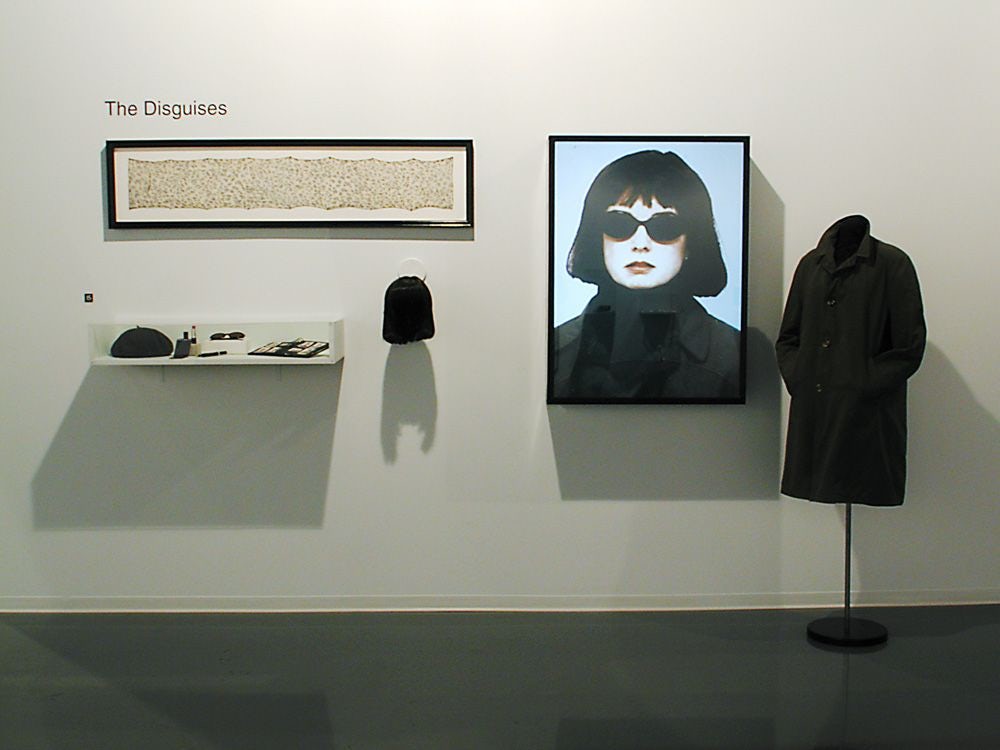
Vera Greenwood
L’hôtel Soficalle
2002.11.15 - 2003.01.19
ANNE BÉNICHOU
During a stay in Paris in the winter of 1997–98, Vera Greenwood undertook a strange activity: she began to tail the French artist Sophie Calle. This project extends the strategies of Calle, who bases her art practice on incursions into the private life of unknown people chosen by chance and without their knowing. Greenwood was referring specifically to La filature, a photographic and textual work relating the tailing of Calle, in 1981, by a private detective hired by the artist’s mother, at the artist’s own request; the detective did not know that Calle knew he was following her.
The Hôtel Soficalle1 project reports, with a delicious mastery of narrative, on Greenwood’s adventures in Paris. She first retraced the itinerary that Calle took in 1981 by photographing the sites “without Sophie.” Then, during the première of No Sex Last Night, a film by Calle and Greg Shephard, Greenwood managed to take a number of pictures of Calle. But the untimely flare of the flashbulb gave her away: Calle caught sight of the spy, and Greenwood had to start to use disguises. She then went to the Duluc detective agency (the one that Calle’s mother had done business with), where the owners, taken aback to learn that they had participated, seventeen years before, in a post-conceptual artwork, let her look at their client’s file, even though it was confidential. Greenwood supports her account with numerous pieces of evidence: black-and-white photographs and objects resulting from the adventure. She presents it all in a traditional museological mode: glass cases, didactic wall panels, and a numbering system organize the viewer’s visit.

What can we draw from the hypertext of La filature? Greenwood, with her unique way of not taking herself seriously, intends to flush out Calle’s lies and omissions. Certain buildings that the French artist mentions have mysteriously disappeared. Her studio, located on Rue d’Ulm, is in reality the Institut Curie, of which her father was the director. The account of the detective from the Duluc agency does not give the same version of the facts as does Calle’s account. By exposing the pretense of these reflections, the considerable effort that they necessitated, and the impossibility – even uselessness – of verifying them, Greenwood shows that it is futile to wonder whether La filature and, by extension, L’hôtel Soficalle are true stories.
Greenwood also creates a mischievous reversal of the question of identity. La filature_questions the role of the Other in the processes of constructing identity. Because she knows that she is being observed, Calle composes an image of herself that induces her itinerary. While _L’hôtel Soficalle purports to be an “authentic” portrait of the French artist, who does not know that she is being watched, it is definitely Greenwood’s distortions that are actually the central subject of the work. Thus, she leaves her surveillance of Calle’s home to take pleasure in having herself photographed in her many disguises.
This project elaborates on the major issues in Greenwood’s recent work. In 1997,Inside Out emphasized the importance of the regard and the models of others in the definition of identity; the following year, High Ground explored the share of invention in the autobiographical account. In L’hôtel Soficalle, the quotation of La filature allows the artist to question her own artistic approach. It is however, with modesty and critical distance that Greenwood conducts this examination. She does not try to rival the brazenness of her French colleague. Her gaffes and clumsy moves accumulate. She naively borrows investigation techniques from the popular detective novels by the American author Sue Grafton, several of whose books she integrates into the exhibition. By adopting an “anti-heroic” attitude, Greenwood deconstructs the stereotypes of detective literature and the characters that populate it. She also encourages us to question the way in which Calle exploits this literary tradition.
This text is publish with the courtesy of the author and CV photo, #54, 2001, p. 32.
